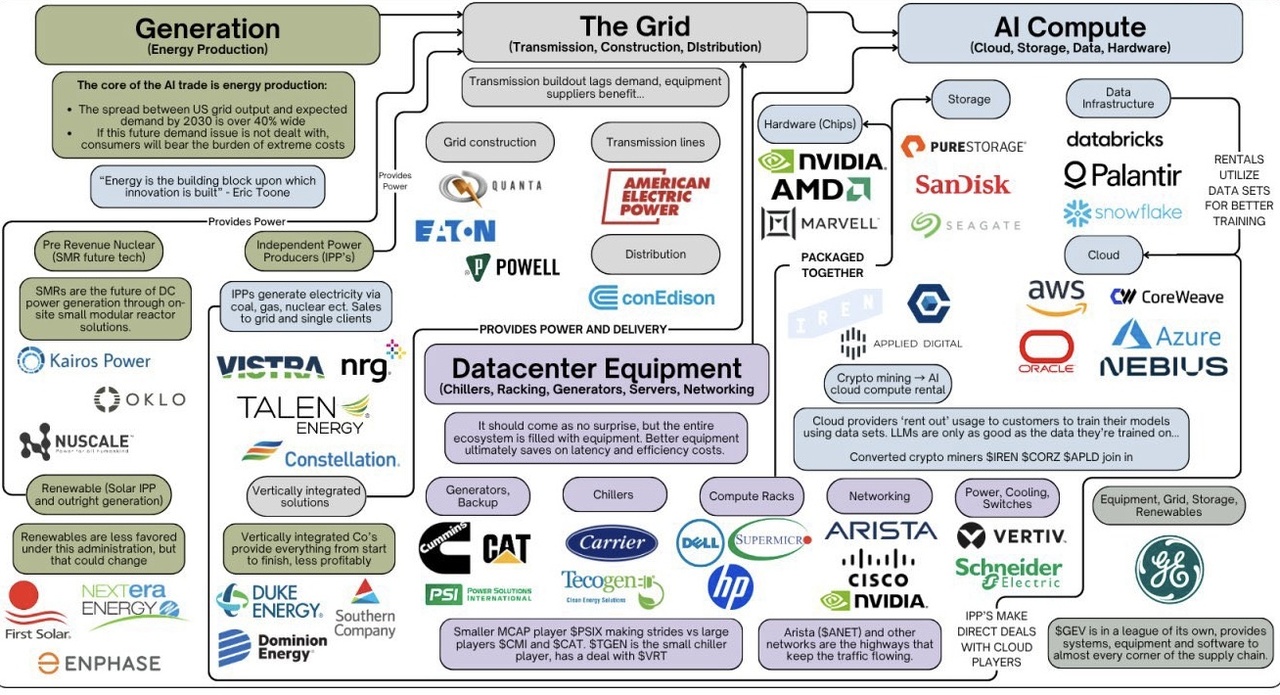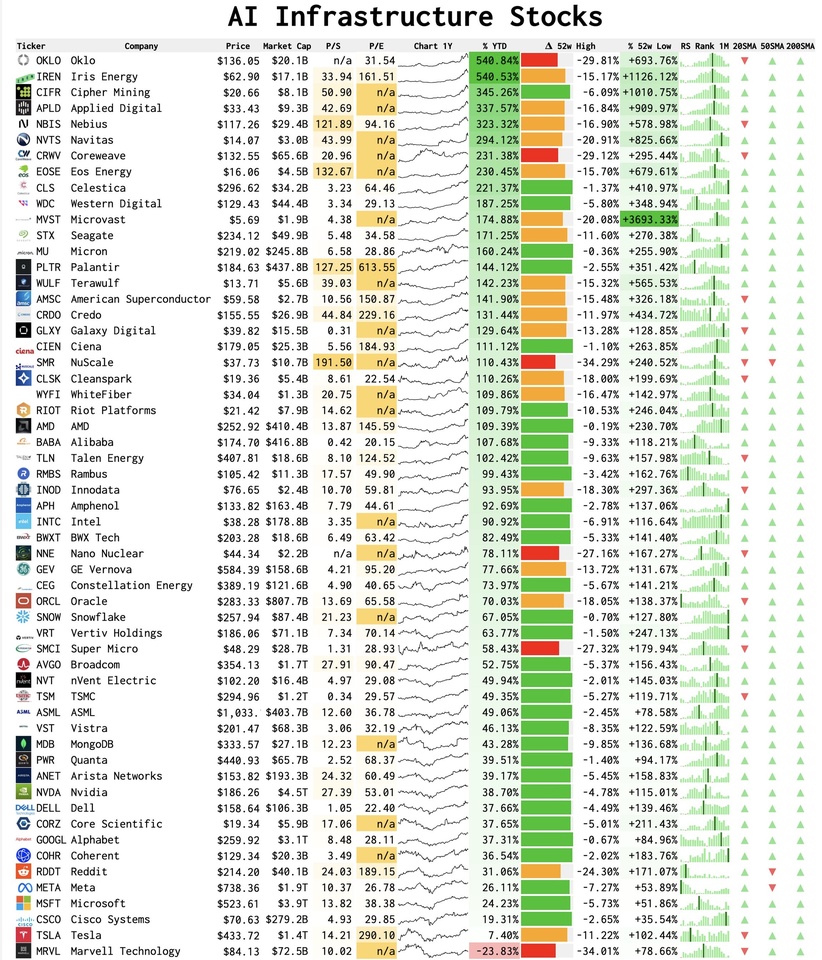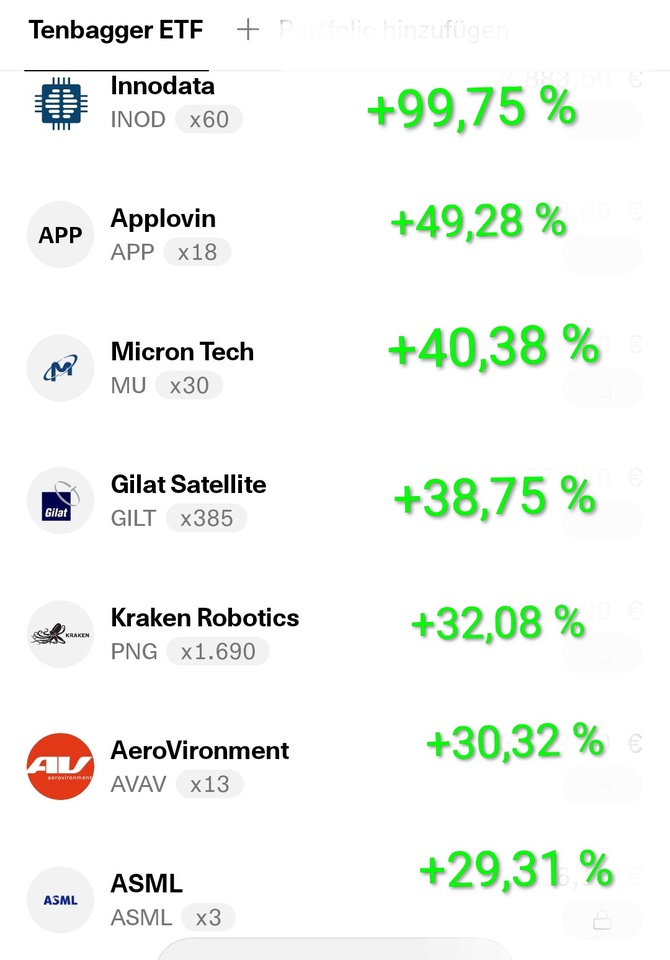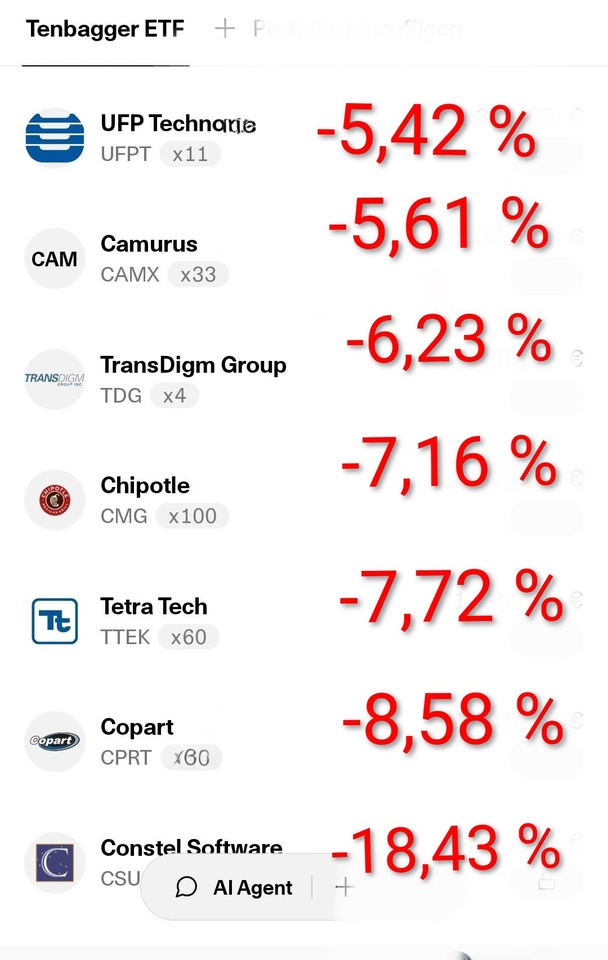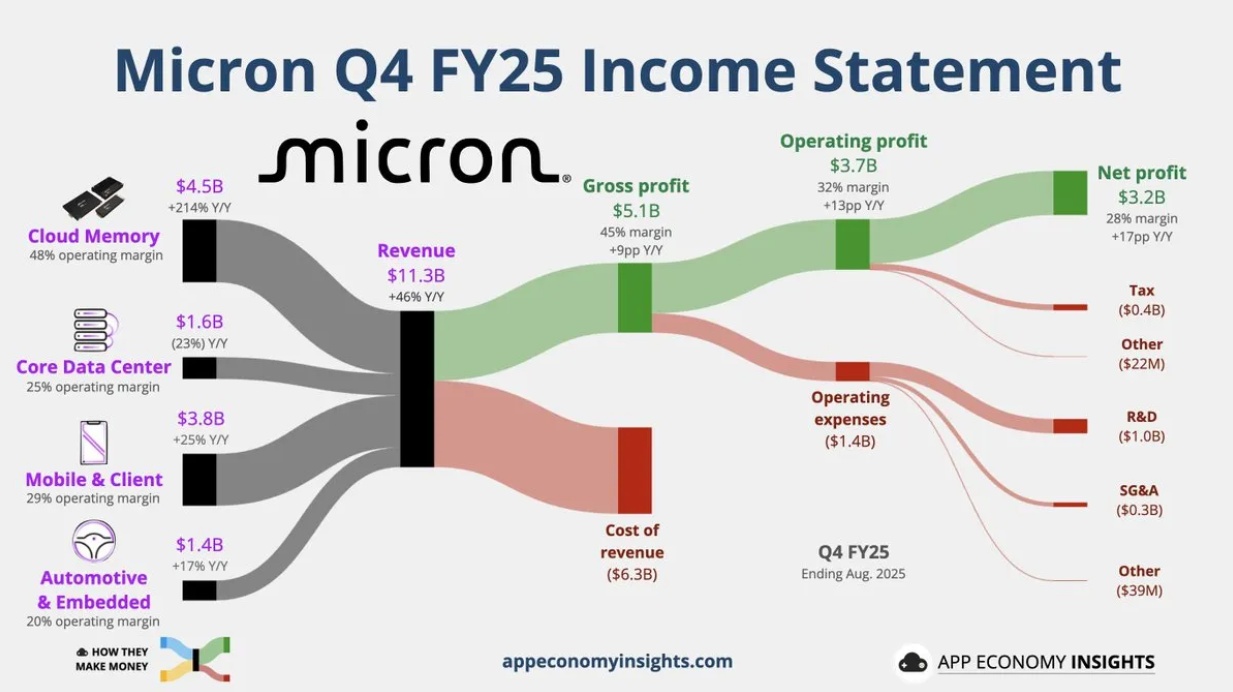$IREN (+11,25%)
$CIFR (+17,08%)
$BTC (+0,25%)
Maybe some exciting companies for you ✌️
I am currently only in $IREN (+11,25%) and $CIFR (+17,08%) which are the most promising for me in terms of the opportunity/return ratio. In the event of a further setback, I would $CIFR (+17,08%) probably add a little more and perhaps pick up one or two other companies.
AI stocks, sorted by YTD performance:
Hyperscalers: $GOOGL (+1,8%)
$MSFT (+0,63%)
$AMZN (+1,56%)
$ORCL (+1,12%)
$BABA (+1,49%)
Neocloud: $NBIS (+9,49%)
$IREN (+11,25%)
$CRWV (+6,79%)
$APLD (-1,37%)
$GLXY (+3%)
$WYFI
Memory: $SNDK
$STX (+4,07%)
$MU (+5,61%)
$WDC (+3,12%)
$PSTG (+0,71%)
Semiconductor: $NVDA (+2,31%)
$AVGO (+1,78%)
$AMD (+6,32%)
$TSM (+1,4%)
$ASML (-0,02%)
$ARM (+1,87%)
$KLAC (+1,14%)
$INTC (-7,3%)
Networking: $CIEN (+4,21%)
$CLS (+1,59%)
$CRDO
$RMBS (+3,57%)
$ANET (-0,02%)
$APH (-0,89%)
$COHR (+6,21%)
Servers: $VRT (+1,24%)
$DELL (+2,26%)
$HPE (+0,85%)
Data: $INOD (+2,8%)
$PLTR (+2,29%)
$SNOW (+2,02%)
$DDOG (-0,63%)
$MDB (+1,25%)
Energy: $LEU (+11,22%)
$CEG
$OKLO
$TLNE
$GEV (-1,56%)
$NXT (+0%)
Batteries: $EOSE
$QS
$TSLA (-3,07%)
$MVST (+2,85%)
Every AI Value Chain explained:



